Published Apr 28, 2022
Revisiting the Star Trek Novel Dark Mirror
Three decades before Star Trek: Picard’s Confederation, a bestseller sent Jean-Luc Picard into the Mirror Universe
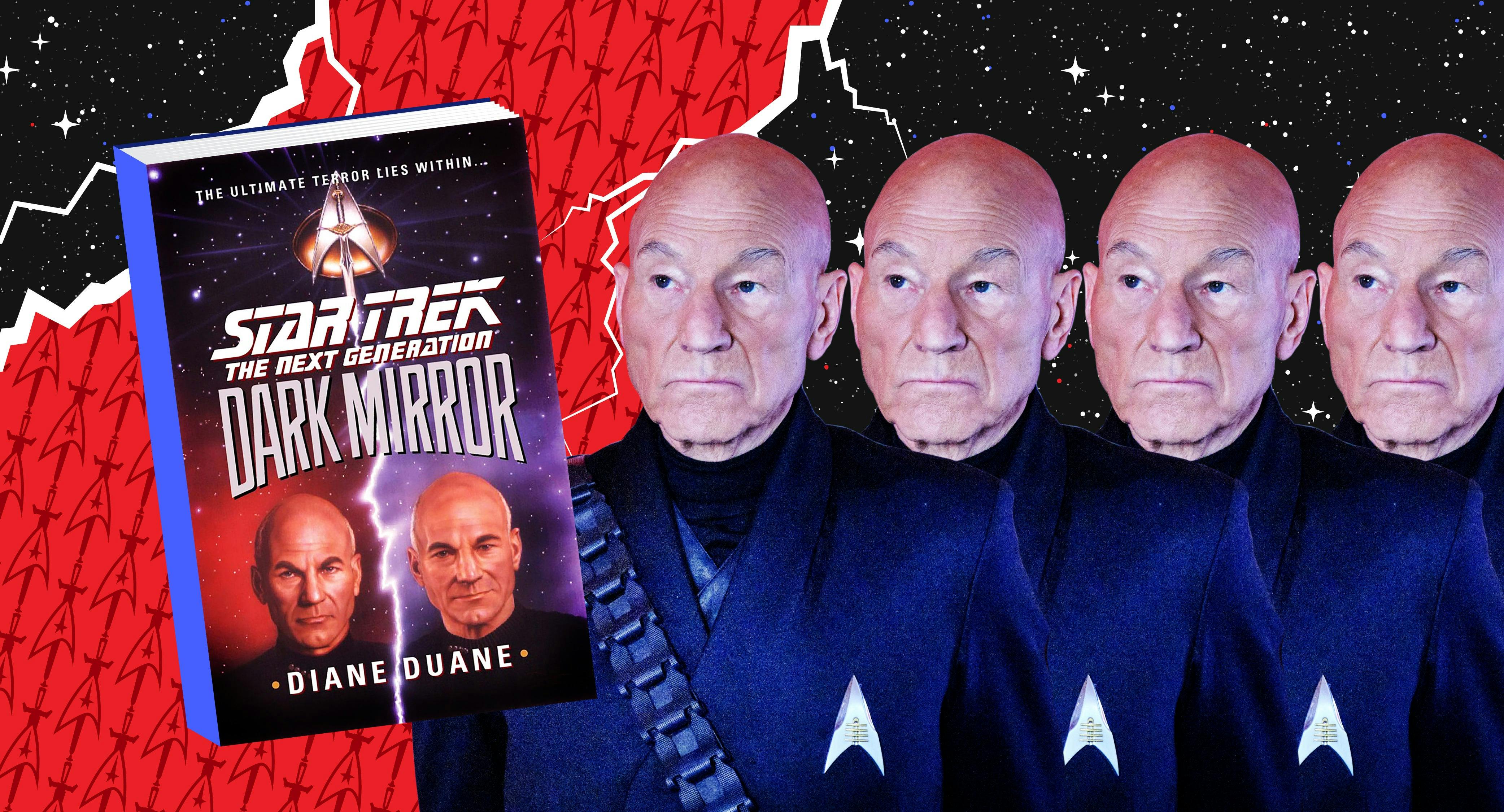
StarTrek.com
The New York Times Best Seller list from November 28, 1993, reads like a time capsule.
Appearing on the fiction list are Robert James Waller’s The Bridges of Madison County, Stephen King, Tom Clancy, Anne Rice, John Grisham, and Margaret Atwood. Appearing on the nonfiction list are Rush Limbaugh, Howard Stern, Jerry Seinfeld, Maya Angelou, Margaret Thatcher, and Michael Jordan. No. 2 in advice/how-to books is John Gray’s Men Are from Mars, Women Are from Venus.
The Star Trek franchise, riding high with the ratings for Star Trek: The Next Generation’s seventh season, appears twice. Star Trek Memories by William Shatner with Chris Kreski is No. 9 on the nonfiction list. Clocking in at No. 14 in fiction is Diane Duane’s Dark Mirror, with the one-line synopsis:
“A Star Trek story about an evil universe that tries to replace one of the Federation’s starships with its own.”
Flash forward three decades, and Star Trek fans are quite familiar with evil universes, as Jean-Luc Picard discovers a dystopian alternate reality and twisted version of himself in Star Trek: Picard’s second season. This follows visits to the infamous Mirror Universe in Star Trek: Discovery, Star Trek: Enterprise, and Star Trek: Deep Space Nine.
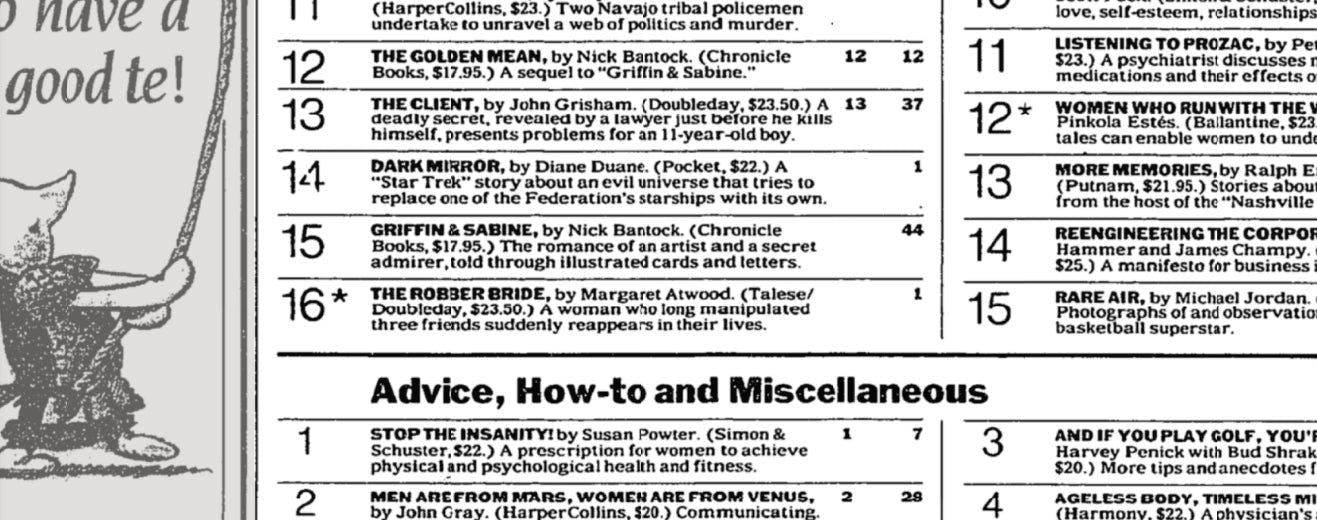
StarTrek.com
Back on November 28, 1993, an upside-down Star Trek universe felt more novel. Up to that point, the only Mirror Universe story on TV had been 1967’s “Mirror, Mirror,” with its goateed Spock and censor-defying exposed navels. As far as The Next Generation went, “Yesterday’s Enterprise” from 1990 portrayed alternate-reality characters who were still recognizably good. The same was (mostly) true of “Parallels,” which moreover would not air until November 29, 1993 (the day after the Times list was published).
Duane’s Dark Mirror was a notable story with an accessible premise: The fittingly pulpy cover illustration was of a scowling Picard and a content Picard, divided by a lightning bolt. The book was a New York Times bestseller and one of the standout “unnumbered” Star Trek novels. Although its version of the Mirror Universe was overwritten just six months later by the Deep Space Nine episode “Crossover,” its foretelling of Picard’s dystopia and impact on future Mirror Universe stories make it worth revisiting decades later.
The United Empire of Planets
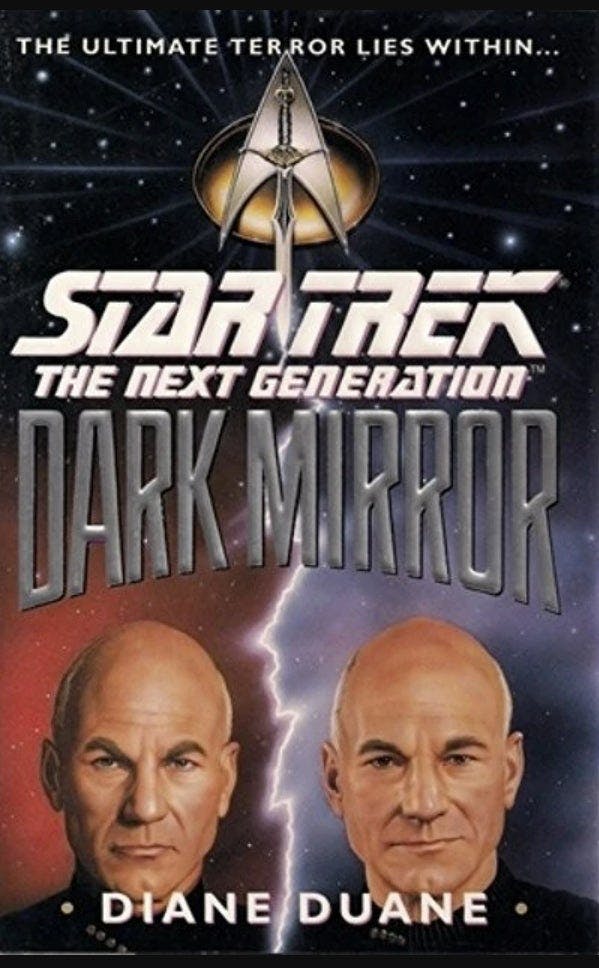
StarTrek.com
“They had spread as widely as they could through the Galaxy and conquered everything in sight. They had subjugated every sentient species, destroyed all the ones that would not submit or were too alien to negotiate with them or couldn’t understand at all what the Empire wanted. They had now succeeded in exterminating, or dominating, almost all life with which they had come in contact. And at the end of it all, they had been stopped, not by any ethical or moral force, uprearing in indignation… but by the simple, quiet, patient dark, in which everything ended sooner or later.” - Diane Duane's Star Trek: Dark Mirror
The Mirror Universe of the novel is different from the one later canonized on Deep Space Nine. The brutal Terran Empire (in the novel, called the United Empire of Planets) was not destroyed by the 24th century. To the contrary, it was stopped in its expansion only by the physical end of the Milky Way Galaxy’s Sagittarius Arm.
If anything, the novel’s Empire more closely resembles the totalitarian Confederation seen in Star Trek: Picard. The Confederation was shown to have nearly exterminated the Borg while also engaged in conflicts with the Vulcans, Andorians, and Dominion, implying it was an all-consuming force stretched across the galaxy.
The Mirror Enterprise
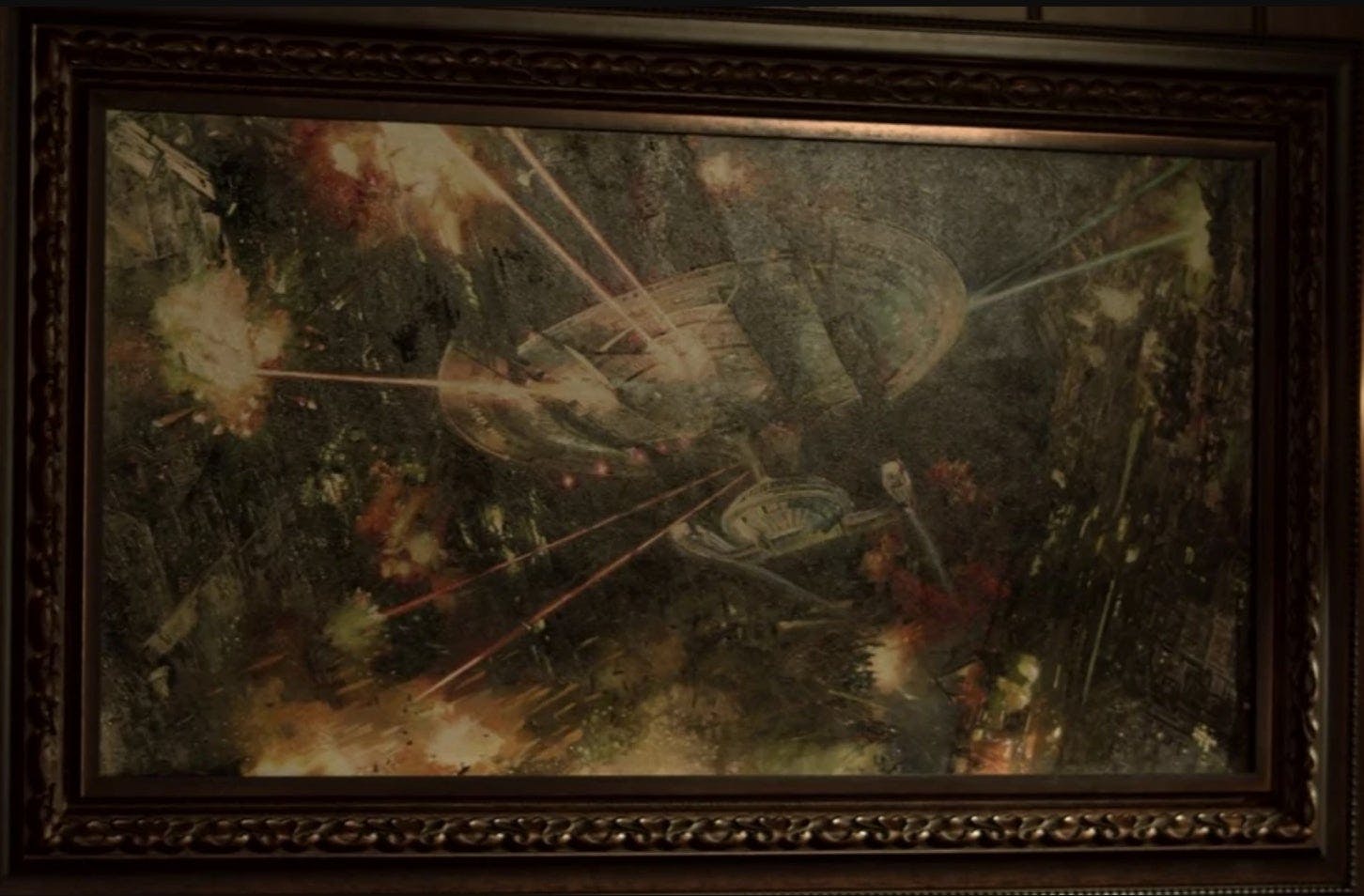
StarTrek.com
“It was Enterprise. But not his Enterprise. It was a dark gray, even enlarged, a gunmetal color, cool and unfriendly.
“The design was overtly the same—the great sloped disk of the primary hull, the nacelles, the secondary hull, all where they should be. But the secondary hull seemed larger, the nacelles were raked farther forward, and lower. The primary hull’s curve was deeper and now had a frowning look about it. If ships had expressions, this one had its eyes narrowed. It was a cruel look, and intimidating.” - Diane Duane's Star Trek: Dark Mirror
A memorable moment in Picard’s second season is the sight of Picard’s old ready room painting, transformed from the nostalgic image of the U.S.S. Enterprise to an image of the C.S.S. World Razer. The moment evokes the unveiling of the Mirror Enterprise from “Dark Mirror.” The evil twin of the Enterprise is not identical, but the profile is instantly, disturbingly recognizable.
In describing the Mirror Enterprise, the novel continues a Star Trek tradition of adding shades of gray to good and evil. In the classic episode “The Enemy Within,” in which Captain Kirk is split into good and evil halves, Evil Kirk turns out to be the half who retains the ability to command. In “Dark Mirror,” the Mirror Enterprise is superior to the friendly Enterprise in many ways, and inferior in others.
Worse than the Borg
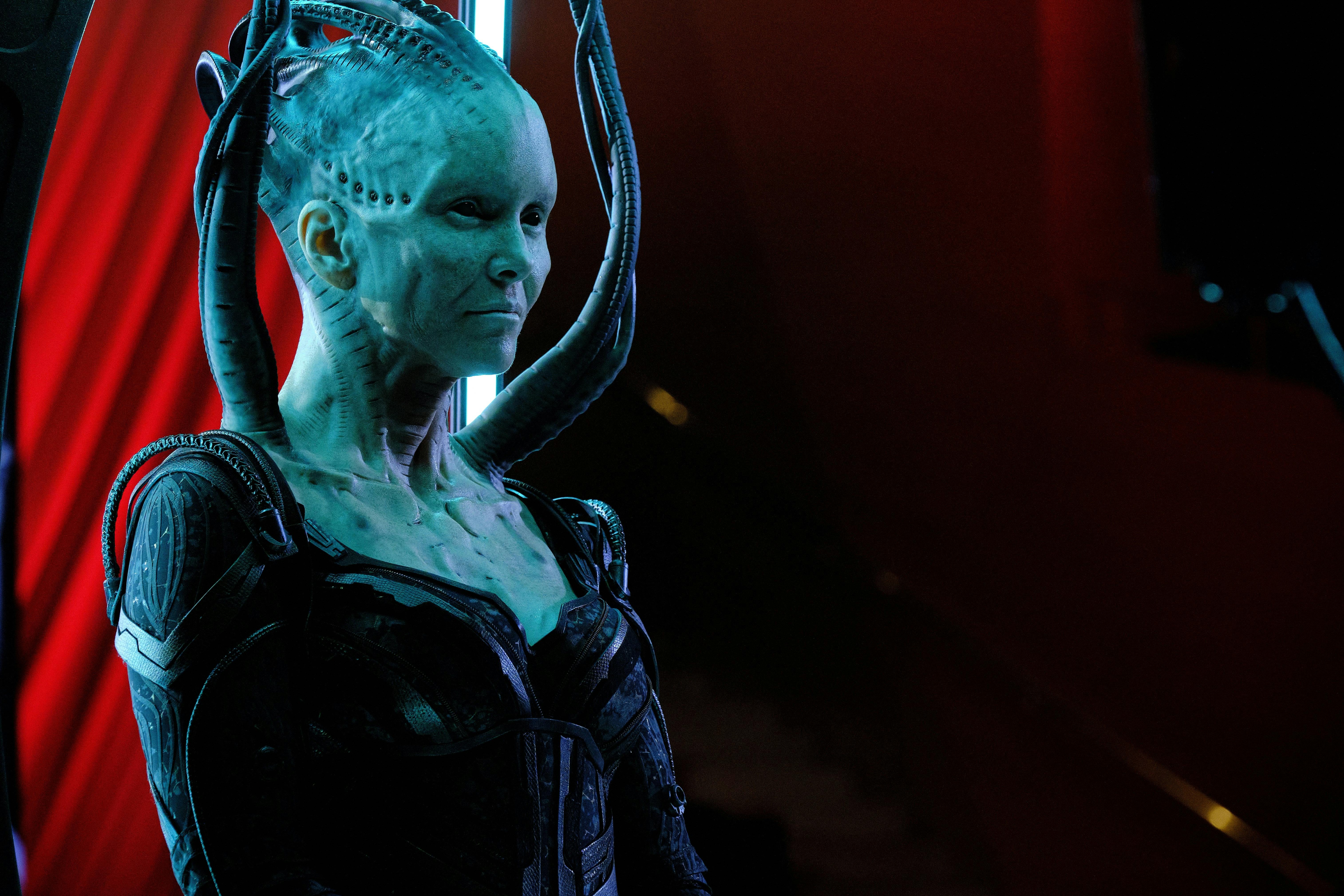
StarTrek.com
“… they’ve never met Q. Or the Borg. Though he found himself wondering whether a meeting with the Borg might not have been good for these people—for this Empire as a whole—if the catalog of Enterprise’s pillagings, slaughters, planetary destructions, and other horrific actions was typical of this universe’s Starfleet. The Borg might even be beneficent by comparison, he thought bitterly. They might be cold and inhuman, but they aren’t sadistic or purposefully cruel.
“That thought, that he could wish the Borg on anybody, no matter how they acted, so shocked Picard that he stopped himself in his tracks and just breathed in and out a few times…” - Diane Duane's Star Trek: Dark Mirror
Picard, in reviewing the history of the Mirror Enterprise, sees irony in the fact that their counterparts never encountered Q or the Borg, two forces that could have humbled them. He is not the only character to feel this way: In preparing to sneak aboard the Mirror Enterprise, Geordi remarks he would rather beam onto a Borg ship.
The comparison is similar to the tradeoff posed in Picard. Given the choice between a benevolent Federation that faces the threat of the Borg or a malevolent Confederation that has functionally destroyed the Borg, Picard does not hesitate to choose the former.
Shakespeare and the Bible
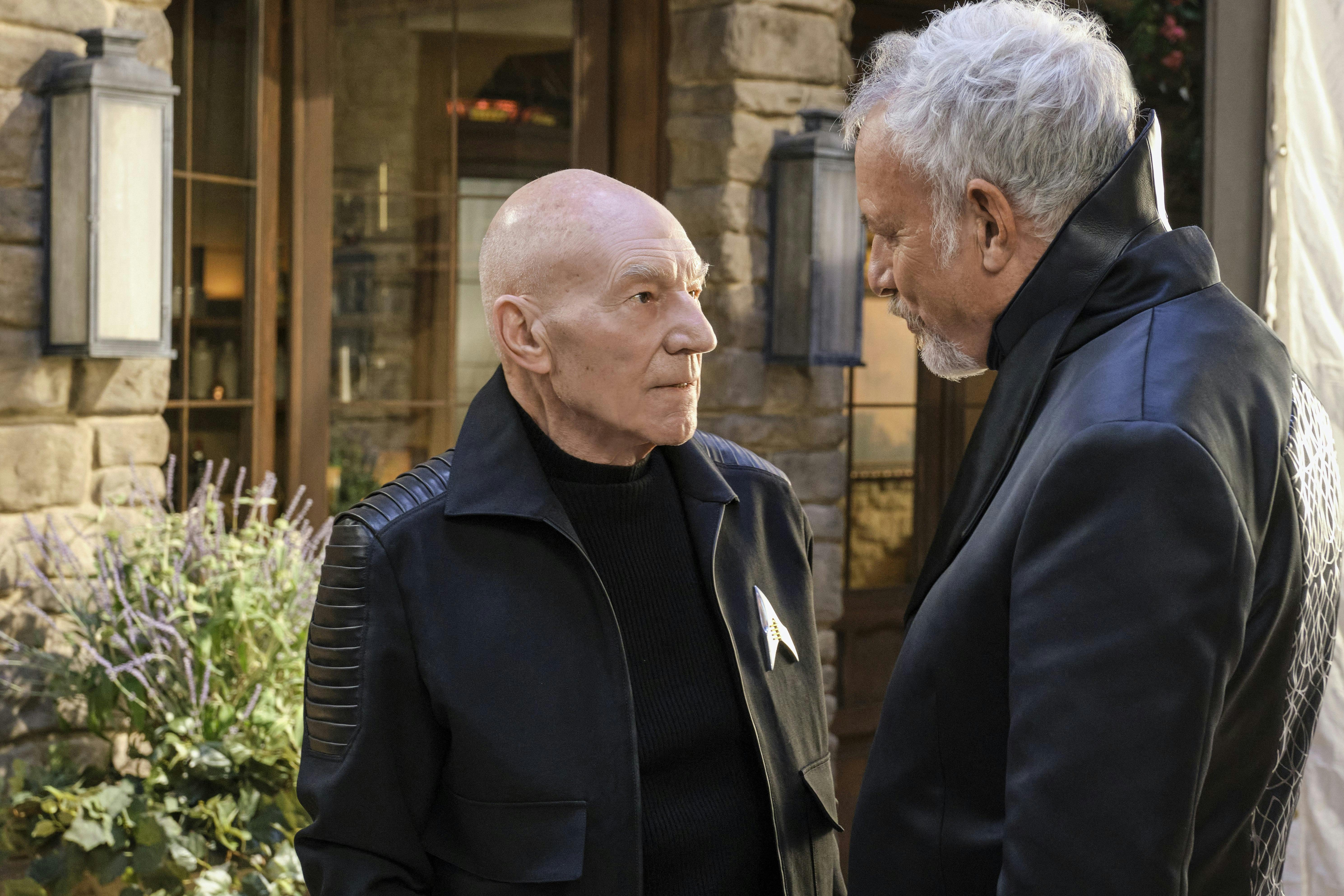
StarTrek.com
“… He turned the pages and found what frightened him more second by second: a Shakespeare horribly changed in all but the parts that were already horrible. Titus Andronicus was much as it had been. So was Macbeth, and oddly, Lear; but Picard paged through the latter and breathed out unhappily, almost a moan, to find one small part missing: that of Cornwall’s ‘first servant,’ who tries to protect old Gloucester from having his eyes plucked out and is immediately killed—a matter of a few lines in the original, now gone completely. And the other two servants gone dumb, and not even a single voice raised, now, to protest the old man’s fate at the hands of Lear’s hateful daughter and her husband.
“Slowly Picard shut the book, put it back, and looked mistrustfully at the Bible—and, beautiful language or not, decided not to pick it up.” - Diane Duane's Star Trek: Dark Mirror
This scene is haunting, perhaps the dramatic climax of encountering a universe where good and evil are flipped. It is textbook terror, because Picard ultimately refuses to open the King James Bible, and the reader is left wondering what he would have found inside.
Years later, in the Enterprise two-part episode “In A Mirror, Darkly,” this scene served as inspiration for an exchange about differences in the two universes’ historical literature. Picard’s library as a window into his altered reality is also a conceit in the Picard episode “Penance,” which opts for horror rather than terror: The library in Chateau Picard is decorated literally with the skulls of the man’s enemies.
Dark Mirror serves as a spiritual companion to the second season of Picard, a source for Mirror Universe stories from the 1990s onward, and an artifact from a time when few of Star Trek’s high-concept episodes from the 1960s had yet been revisited in earnest. Rather than dive deep into the political intrigue of a Terran Empire or Klingon-Cardassian Alliance, this novel more or less picks up where viewers left goateed Spock, with a new generation stuck in a bizarro world in which “good is bad” is a law of nature. As in Picard, this alternate reality is irredeemable: All our heroes can hope to do is to escape with their lives.
Nitesh Srivastava (he/him) is a father of two, writer, and marketer who lives in Des Plaines, Illinois. You can find him on Twitter at @niteshsrivastav
Star Trek: Picard streams exclusively on Paramount+ in the U.S. and is distributed concurrently by Paramount Global Distribution Group on Amazon Prime Video in more than 200 countries and territories. In Canada, it airs on Bell Media’s CTV Sci-Fi Channel and streams on Crave.

